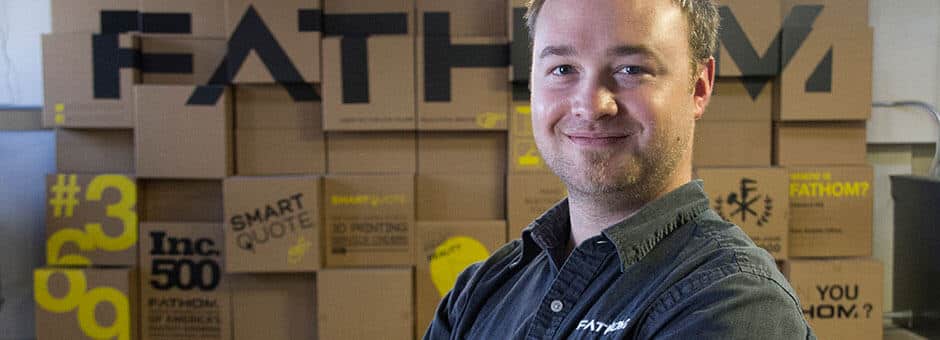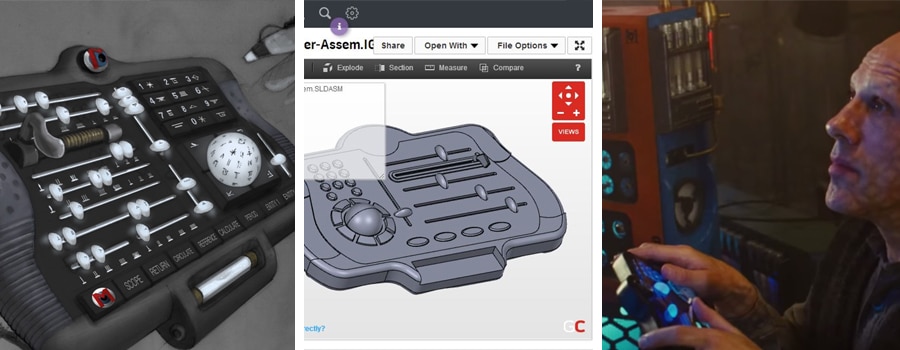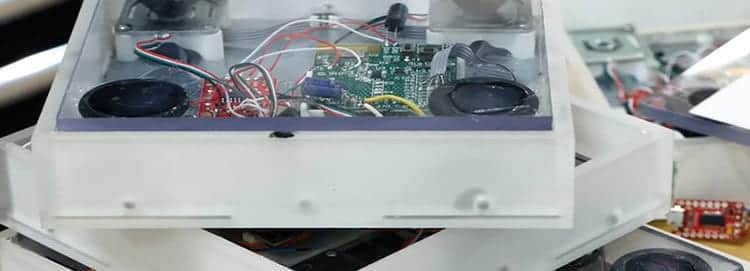Q&A Interview with Dylan Oliver

Our team announced this week that our Washington-based office is moving to a new location in Seattle that will include a robust 3D printing production center. Were excited about the recent expansion efforts, especially our Pacific Northwest General Manager Dylan Oliver who is ground zero during construction. The production center is located at the corner of Stone Way and N 43rd Street and is scheduled to open its doors next month. Check out our latest Q&A with Dylan where we discuss the big news and 3D printing in general.
Fathom has been supporting the Northwestern region with 3D printer sales, support and services since 2008 — tell us about the upcoming expansion and what residents of the Washington area have to look forward to after its grand opening in fall this year.
Answer: We are really excited to be expanding our presence in the Pacific Northwest. With an ever growing list of industry leading equipment, Fathom is poised to offer its Northwest customers unparalleled quality, expertise, service and turnaround times.
The workshop is located at the corner of Stone Way N and 43rd Street — why did the Fathom team choose this location?
Answer: We didn’t want customers to have to drive to an office park in the middle of nowhere or battle downtown traffic. We also didn’t want our customers (and employees) to have to stress out finding parking or worrying about meters. Our shop is just two turns from I-5 near the University of Washington and offers quick and easy access to downtown …and we have our own parking lot!
The economy in Seattle is split between older industrial companies and emerging technology-based start-ups and is listed as one of the fastest growing cities in the United States according to Census data released earlier this year — what do you see happening in the product development and manufacturing space and how are these companies utilizing 3D printing technologies?
Answer: The Pacific Northwest has a tradition of innovation. Companies like Boeing, Microsoft and Amazon to name a few, attract the best talent the country and world have to offer. This naturally breeds spin-offs and start-ups and the area generally serves as incubator for tomorrow’s devices, technology and innovation. Fathom’s equipment and knowledge will help area clients bring the future to us even sooner, compressing development times and boosting productivity.
Consumer-friendly 3D printers for hobbyists and DIY enthusiasts like the MakerBot has shed headline-making light on the 3D printing industry during the last few years — what are the advantages and disadvantages of using personal machines versus commercially available professional printers?
Answer: These lower cost technologies are great for the industry, providing hesitant users with a feasible entry point into the game. These users then get used to the process and soon understand the limitations of lower-end systems — you get what you pay for. However, the rise of hobby printers puts pressure on the larger manufacturers to push the limits of what high-end, professional equipment can offer.
Fathom is a preferred reseller of Stratasys 3D printers and 3D production systems for office-based rapid prototyping and direct digital manufacturing solutions — what are some considerations for engineers and designers who are looking into various 3D printing technologies including Fused Deposition Modeling (FDM) and Polyjet Technologies from Stratasys?
Answer: It really all comes down to type of application, throughput and of course, budget. FDM and PolyJet are complementary technologies; in fact many of our customers adopt both platforms. There are areas that overlap for sure, but generally speaking PolyJet offers the best surface finish and material versatility while FDM offers strength and stability. With high-end PolyJet, you can simulate overmolding with rubber-like materials on a variety of rigid substrate materials. With high-end FDM, you get into more serious thermoplastics like Polycarbonate, ULTEM and PPSF. This is where working with Fathom comes into play — we work with the some of the biggest companies in the world to help them better understand ways they can leverage these technologies to save time and money.
Regarding the merger of Objet and Stratasys, blog author Sam Green interviewed Phil Reeves of Econolyst asking what he thought are the complementary strengths of the two companies that make them a good fit — what do you think about these two technologies coming together?
Answer: I think ultimately it was a natural fit and it’s not the first time these companies have done business together. As this industry expands, mergers and acquisitions are bound to happen. In this case, I think both players come out ahead for sure and in the long run, the consumer is going to get better pricing and see more innovation. There are big ideas brewing under the new Stratasys and both companies have a tradition of heavy R&D spending. I am very excited to see what happens over the next several years.
Forbes published “Manufacturing the Future: 10 Trends to Come In 3D Printing” by Eric Savitz at the end of 2012 — with more than half the year over, would you say Savitz’s predictions have come true so far?
Answer: I would have to say the write-up is right on and usually there is a lot of misinformation presented about this industry. Some of these things have already been happening and all are certainly happening right now. This industry is evolving and expanding in a huge way. These machines can make whatever you can imagine, with very few limitations, as long as you pair the applications with the correct technology. So much has happened in this industry in the last year, with so many firsts… this party is just getting started, but some of us have been milling around waiting for people to really show up for quite some time!
3D printing has long been used for creating rapid prototypes but users are rethinking how to use these technologies, creating all sorts of 3D printed parts for end-use — tell us about some of the ways you’ve seen Fathom customers utilize these advanced technologies?
Answer: We really don’t disclose how our specific customers use ours services because IP is of the utmost importance. Our credibility hinges on trust because we see products taking shape long before they hit the shelves. We see all kinds of things move through the production center. Exciting stuff for sure. We see parts built on data derived from 3D scans and CT/MRI data, assembly jigs and fixtures for manufacturing, digital sculpts for game and film… consumer products, research projects, medical devices, dental models and surgical guides. Odds are you interact with many products that were 3D prints first. If you happen to be reading this on computer screen, that device was 3D printed and evaluated prior to manufacturing. It is the norm and if your company isn’t doing it, your competitors are and have been.
Fathom has some exciting news to share in the upcoming months leading to the Seattle office opening — what do you enjoy most about being part of the 3D printing industry and the Fathom team?
Answer: It is good to be on the leading edge of an emerging industry with a company that values its employees and customers. These are exciting times professionally and personally — I get to do what I love in my favorite city and it doesn’t get much better than that.


